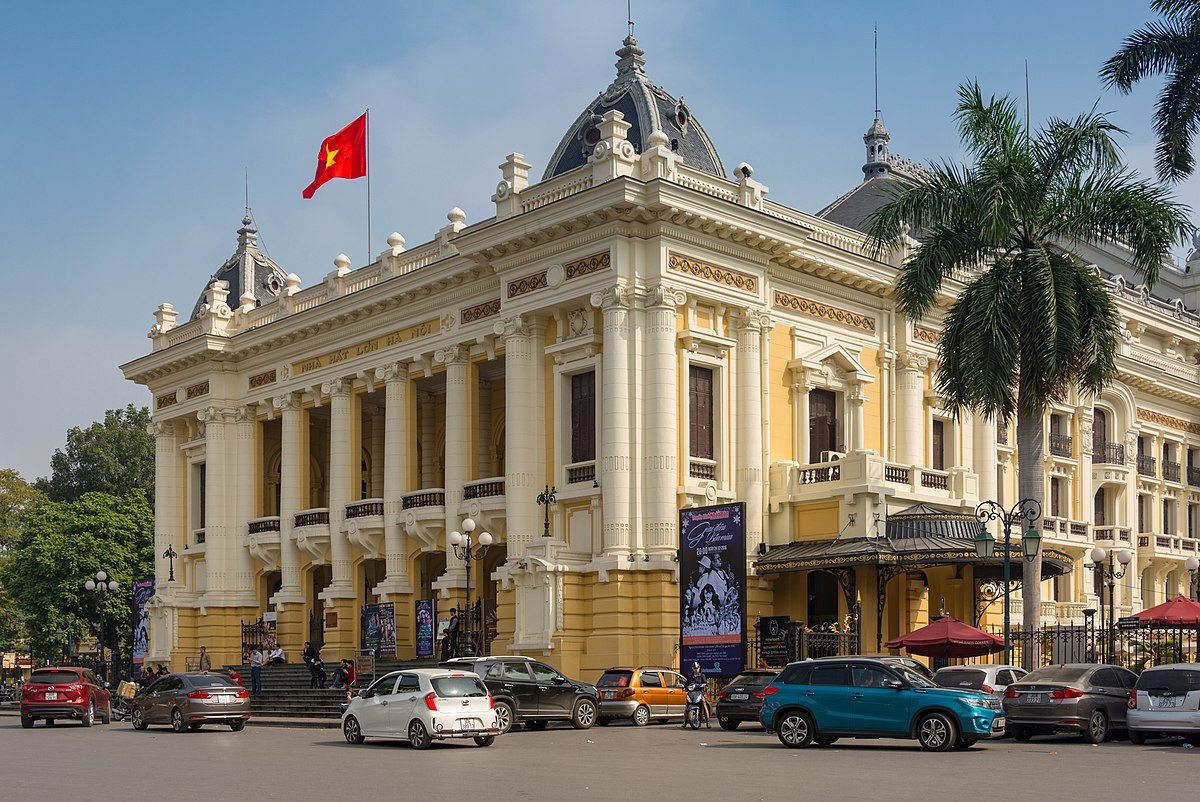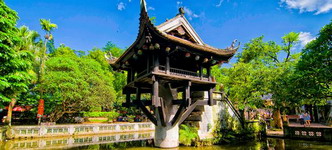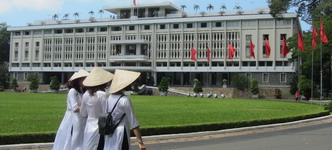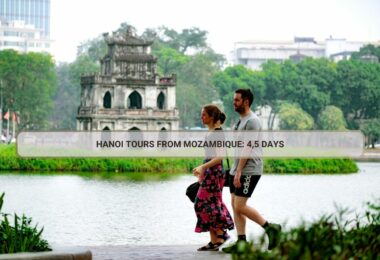European architectural beauty in the heart of the capital Hanoi Opera House – HISTORY OF FOUNDATION & DEVELOPMENT 1899: The land for the construction of the Opera House was formerly a swampy area belonging to the land of two villages Thach Tan and Tay Luong belonging to General Phuc Lan, Tho Xuong district. In 1899, the city council met under the chairmanship of Richard – the Hanoi Ambassador to propose to General Governor Fourier to build the Theater. The author of the design project is two architects, Harlay and Broyer. This design has to be revised a lot to the comments of many architects. 1901: Construction was started on June 7, 1901, under the technical supervision of urban inspector – architect Harlay – one of the two design authors. The people in charge of construction are Mr. Travary and Savelon. Leveling the ground is very difficult. There are 300 workers working every day, 35000 bamboo poles are driven with concrete blocks 90 cm thick. The project must use more than 12000m3 of materials, nearly 600 tons of iron and steel. The work occupies an area of 2600m2, the length of the work is 87m, the width is 30m, and the highest point of the work is 34m above the road surface. The front of the building is very grand, there are many steps overlooking the wide square (now called August Revolution Square), The long steps run in front of the former Theater to directly receive the cars of colonial officials. come and see. The designers of the work have sought to refer to the ancient Greek architecture of Corinth combined with the style of the castle of Tuylory and the Paris Opera to create a separate architectural block Inside the theater, there was a large stage, and the main audience room with an area of 24x24m, that day accommodated 870 seats, leather seats, some seats upholstered in velvet. The middle floor has many small rooms for spectators with separate tickets. The middle staircase to the second floor is a large main hall. Side stairs and corridors on either side. Behind the theater is an administration room, with 18 rooms for actors and actresses, 2 rehearsal rooms, a library, and a meeting room. In front of the second floor is a very splendid mirror room. The approved construction budget at that time was 2,000,000 French francs. On August 17, 1945, at the Theater Square, a meeting was held to launch the Viet Minh Front. On August 29, 1945, the North Vietnamese Liberation Army returned to Hanoi to debut at Hanoi Opera House Square. On September 16, 1945, at Theater Square, Golden Week took place. In early October 1945, the Southern Resistance Day was held at Theater Square. On March 5, 1945, the National Assembly of the Democratic Republic of Vietnam held its first session at the Hanoi Opera House.
On September 2, 1946, the meeting to celebrate the 1 year anniversary of the Government of the Democratic Republic of Vietnam and that was also the day Uncle Ho first set foot in the Hanoi Opera House. On October 28, 1946, the second session of the National Assembly approved the Constitution of the Democratic Republic of Vietnam and since then the Hanoi Opera House has been the place where the National Assembly holds the first, second, fourth, and subsequent sessions. until the day there was Ba Dinh Hall. The Hanoi Opera House is the place that witnessed the first moments of peace in our country and is a witness to the revolution of Hanoi Capital. Since then, the Theater has always been the center of important meetings, conferences, meetings, and highly artistic performances of domestic and international art troupes. Dubbed the “Opera Garnier in Paris" miniature in the heart of the capital, the Hanoi Opera House is a popular place for tourists to visit. The work is ranked as a national historical relic, possessing a unique architecture associated with important events in the capital. The following article provides some information about Hanoi Opera House, hopefully, it will help you to explore Hanoi, and visit and experience the architectural space and performances at the Opera House to the fullest… In the mid-1990s, to prepare for the 7th Francophonie Summit in Hanoi in November 1997, the Government of our country decided to restore the Opera House with a budget of 156 billion VND. In 2011, the Hanoi Opera House and the August Revolution Square were recognized as national historical and architectural monuments by the Ministry of Culture, Sports, and Tourism. On December 9, 2011, the Hanoi Opera House celebrated its 100th anniversary. The architecture of the Hanoi Opera House was built according to the model of Opéra Garnier Theater in Paris, but smaller in stature and using materials suitable for our country’s climatic conditions. The work has a length of 87 meters, an average width of 30 meters, the highest rooftop is 34 meters above the roadbed, and the construction area is about 2,600 m². The floor plan of the Hanoi Opera House is divided into three relatively distinct parts. The first space at the entrance is the main hall with a stone T-shaped staircase leading to the second floor. On the second floor, the mirror room is where important ceremonies take place, the signing of government documents, or the reception of high-ranking figures. The next space of the theater is an audience room with a size of 24 x 24m with a large stage, three floors of seats, and a total of 598 seats designed in the 19th-century French classical style. Finally, behind the stage are 18 makeup rooms for actors, 2 practice rooms, and working rooms, libraries, meeting rooms…
The main facade of the theater stands out thanks to the Roman Ionic columns, the top is emphasized by the curved roofs covered with stone tiles like the emphasized Renaissance architectural principles. However, the curved curves of the balconies combined with the arched form above the entrance accentuate the Baroque elements. Particularly, the roof that welcomes the entrance for car occupants on both sides is in the Art Nouveau style. Above the theater, the black stone tiled roof system is very well organized with a combination of many forms, giving a feeling of the French Neoclassical spirit. All these blends give the impression of eclectic Neoclassical architecture with values not only architecturally but also artistically. Hilton Opera Hotel About 50 meters from the Hanoi Opera House, the Hilton Opera Hotel is a work designed by a French architect. Bringing classic lines – such as high columns, Mansard roof… the modern Hilton Opera hotel not only does not break the architectural space of the square but also enhances the beauty of the theater. This 5-star hotel is located in a safe and secure area, with amenities and memorable experiences. Address: 1 Le Thanh Tong, Phan Chu Trinh Ward, Hoan Kiem District, Hanoi Sofitel Legend Metropole Hanoi Hotel Is one of the most luxurious and famous hotels in Hanoi. Sofitel Legend Metropole Hanoi is not only a resort for tourists but also a venue for many important conferences of heads of state. Sofitel Legend Metropole Hanoi Hotel owns a unique ancient French architecture mixed with many modern lines, creating a luxurious and classy space. Address: 15 Ngo Quyen, Hoan Kiem District, Hanoi La Sinfonia del Rey Hotel and Spa Lakefront Hanoi hotel in Hoan Kiem, walk to Thang Long Water Puppet Theater Along with a full-service spa, this hotel has a restaurant and a bar/lounge. In particular, La Sinfonia del Rey Hotel and Spa has 8 treatment rooms, including rooms for the best relaxation couples. Address: 33-35 Hang Dau, Ly Thai To, Hoan Kiem, Hanoi Capella owns magnificent architecture inspired by the Hanoi Opera House. From the opposite perspective, the hotel looks like a jewel on the most luxurious and beautiful street of the Capital. Exquisite and luxurious service designed specifically for each guest promises to bring experiences that any guest wishes to enjoy once in his life when coming to the land of the capital. Address: No. 11 Le Phung Hieu, Hoan Kiem District The above are hotels near the Hanoi Opera House, but they are all relatively expensive because they are located on the golden streets of the capital. If you want to stay in the area near the Hanoi Opera House at a low cost, you can also choose hotels and motels in the Hoan Kiem District area at affordable prices.








































